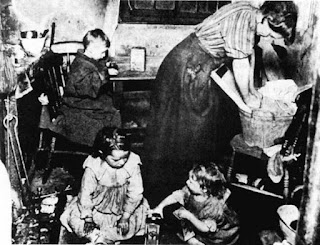America's Fascist Past
As the major news networks declared an Obama victory the night of Nov. 6, 2012, the notorious billionaire and now White House mob boss took to Twitter to register his outrage over the result.
“We should have a revolution in this country!” Trump thundered.
“We can’t let this happen. We should march on Washington and stop this travesty!” he tweeted moments later.
While the outbursts were roundly mocked in the days following the vote, Trump isn’t the only American one-percenter to have advocated the overthrow of a democratically-elected president. In the early 1930s, a coalition of America’s wealthiest industrial magnates allegedly hatched a scheme to topple the Roosevelt Administration and replace it with a fascist dictatorship.
The plan, dubbed “The Business Plot” in the modern day, was dreamed up by a cabal of rich tycoons and Wall Street big shots from several of the largest corporations including Chase Bank, Maxwell House, General Motors, Goodyear, Standard Oil, DuPont, Heinz, as well as other noted Americans like Prescott Bush, grandfather of former President George W. Bush.
Like Trump in 2012, the conspirators were angered over the election of President Franklin D Roosevelt in 1934. Once in office, FDR pledged a raft of measures to alleviate the effects of the Great Depression, which were known collectively as the New Deal. America’s 32nd president was also an advocate for the abandonment of the gold standard, something that horrified many elites. Critics condemned the White House for placing the country on what they saw as a slippery slope to outright Bolshevism.
In 1933, the conspirators planned to recruit 500,000 military veterans from the First World War through various American Legion branches. They even pledged $3 million to buy weapons for their half-million man army so the troops could capture and hold the American capital. Once the seat of power was theirs, the plotters would install an ultra-nationalist and business-friendly regime modelled after Mussolini’s Italy. (Many conspirators were also admirers of Hitler even before the Nazis came to power, largely because of his ardent anti-communism).[3]
The cabal planned to offer command of their rebel army to a celebrated U.S. Marine general by the name of Smedley Butler. The 52-year-old veteran of the war in France had also fought counter-insurgencies in Latin America and the Philippines and was perhaps the most respected military leader in the country.
Just a year earlier, Butler had publicly voiced support for a march on Washington by Great War veterans who were demanding the government make good on its promises to provide benefits. On the orders of then-president Herbert Hoover, this so-called Bonus Army was eventually broken up by another well-known military leader of the day, General Douglas MacArthur. The Business Plotters felt that Butler’s patriotism along with his popularity among veterans would make him an ideal leader for their putsch.
Little did the conspirators realize, Butler had long-since become a critic of corporate greed, seeing it as an engine that drove many of America’s foreign wars. In fact, in 1935, he committed his thoughts on the matter to a famous book entitled War is a Racket.
In 1933, American Legion leaders involved in the plot approached Butler, offereing him command of the rebel army. The decorated war hero immediately alerted Washington of the plot, which admittedly hadn’t progressed much beyond the discussion phase. Nevertheless, a Congressional committee was struck in 1934 to look into the matter.
The McCormack-Dickstein Committee, which would go onto become the House Committee on Un-American Activities, examined the allegations, declaring that there was some evidence of a scheme by Wall Street elites, anti-communists and fascist sympathizers. Even though the findings were declared by Congress to be “alarmingly true”, no charges were ever laid against anyone involved in the plot.
“The [committee] received evidence showing that certain persons had made an attempt to establish a fascist organization in this country. There is no question that these attempts were discussed, were planned, and might have been placed in execution when and if the financial backers deemed it expedient,” Congress declared. [4]
Many blasted the committee’s findings however as pure make-believe. The New York Times declared it a “giant hoax”, while historians since have argued that there is little proof that any plot ever posed a threat.



Comments
Post a Comment